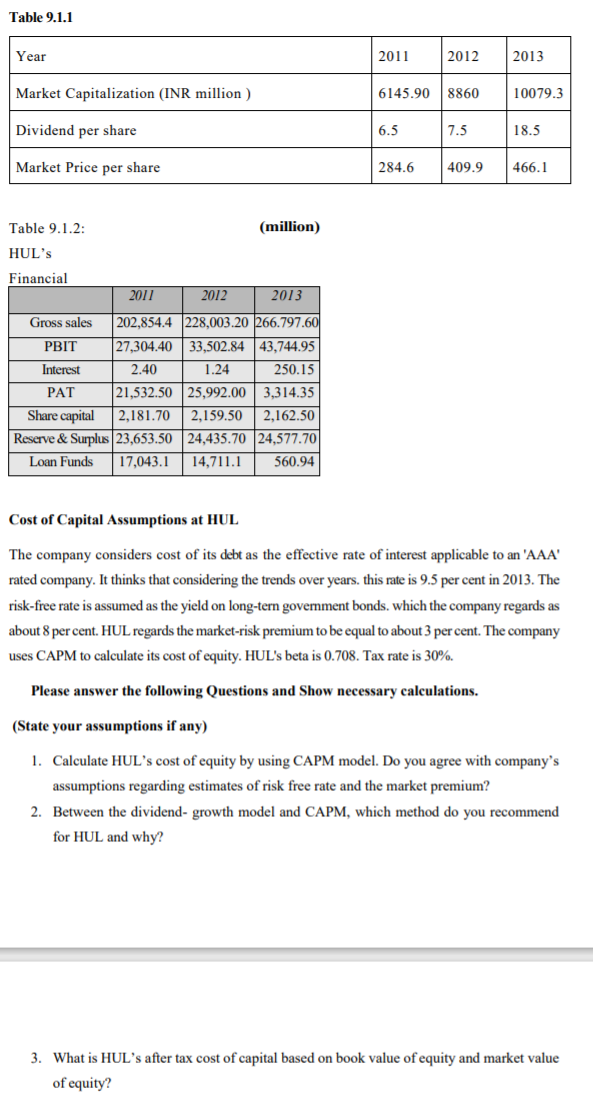Answered step by step
Verified Expert Solution
Question
1 Approved Answer
Table 9.1.1 Year 2011 2012 2013 Market Capitalization (INR million ) 6145.90 8860 10079.3 Dividend per share 6.5 7.5 18.5 Market Price per share 284.6

Step by Step Solution
There are 3 Steps involved in it
Step: 1

Get Instant Access to Expert-Tailored Solutions
See step-by-step solutions with expert insights and AI powered tools for academic success
Step: 2

Step: 3

Ace Your Homework with AI
Get the answers you need in no time with our AI-driven, step-by-step assistance
Get Started


